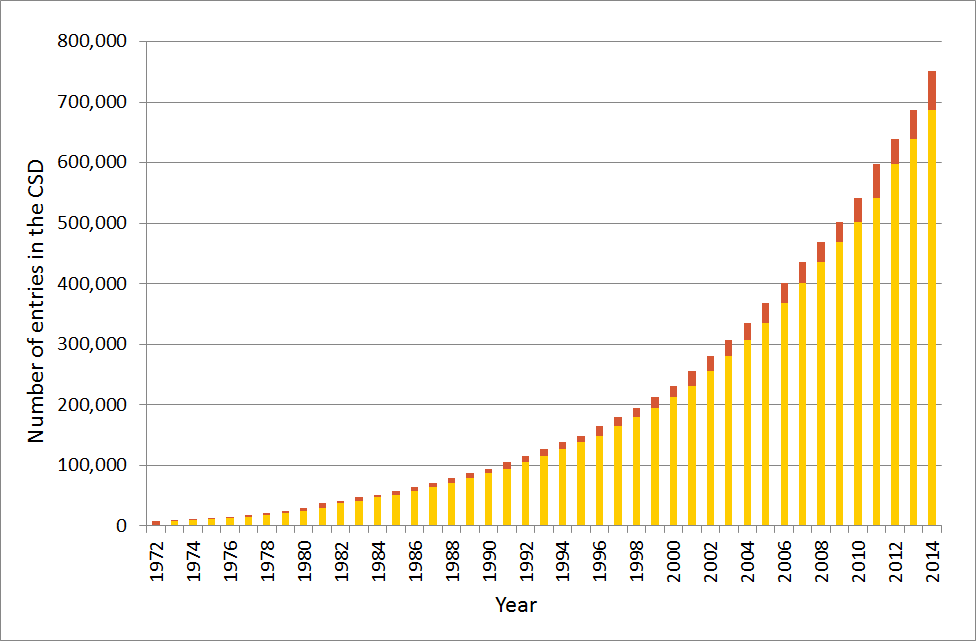2014 – The CCDC’s Truly International Year of Crystallography
“Isn’t every year international for crystallography?”
That’s a question I was asked, in a somewhat tongue-in-cheek manner, by an American structural chemist (who shall remain nameless) towards the end of 2013, as we discussed events planned for the forthcoming UNESCO International Year of Crystallography (IYCr). She had a point, though, as the year was set to show.
It is certainly the case that the user communities of the Cambridge Structural Database are spread around the world. We have users in 71 countries, so that’s by no means an idle claim, but the year started with the IYCr fanfare and the aim to spread the word about the value of crystallography. The opening ceremony, in Paris in January, was a grand affair, bringing together scientists, politicians and diplomats from around the world. Juliette Pradon presented from the stage details of our work in the Democratic Republic of Congo. The IYCR roadshow then rolled on throughout 2014, energizing specialists and sparking wider interest through radio interviews, documentaries, feature articles, workshops – for specialists and the public - and many international meetings. I was lucky enough to attend the next IYCr congress in Pakistan, in April, where the CCDC’s Ghazala Sadiq presented on the advances we are making in understanding polymorphism and at the IUCr Congress in Montreal in August, where CCDC members gave several presentations and workshops.
But successful international communication of the value of crystallography cannot rely on simply attending meetings, no matter how excellent. The CCDC’s mission, as a charitable research institute, encompasses improving the accessibility of the world’s crystallographic data by the world’s structural scientists, and in this respect, 2014 has been a quite remarkable year for us. At the American Chemical Society meeting in Dallas, we announced our collaboration with DataCite to assign Digital Object Identifiers (DOIs) to all datasets of crystal structures deposited with us. We assign DOIs to all structures as soon as they enter the CSD. This dramatically improves the discoverability of data from published articles and other information resources – allowing scientists immediate and free access to the crystallographic information they need. This, for me, was a huge highlight of the year, and was the precursor of other advances that we have made in opening and improving access to our data for everyone, whether or not they contribute scientifically or financially to the charitable work of the CCDC.
After presenting seminars and workshops in Albuquerque, USA at the American Crystallographic Association meeting, and in Erice, Italy, I arrived in the D.R. Congo again in July, where the CCDC and hardware suppliers are helping the University in Kinshasa to establish an expert crystallography centre to support the region and to train future specialists. A successful International Year of Crystallography will be shown by initiatives such as theirs being supported in the long term, when the cameras and microphones have moved on. Initiatives such as this, however, were in force at the IUCr Congress in Montreal and contributed to a wonderful celebration of our science.

Crystallography brings great value to many areas of scientific research, and the boundaries between these blur over time. Helen Berman has contributed enormously to the development of the Protein Databank over many years, and I was in the audience in Montreal when she announced that she stepping back from leading the PDB. Helen was instrumental in helping the CCDC to establish our first operations in the USA, at the Rutgers campus in New Jersey, alongside the PDB operations there. We have built a great new team of scientists there, and I visited several times this year to meet them, our North American users and our collaborators at the PDB. The CCDC is rapidly becoming a far more international organization (note the deliberate spelling which looks awful to a Brit!) through our presence in the USA.
The year closed with three more highlights which both act to strengthen our ties with structural chemists around the world.
The first of these concerned how we distribute the annual release of the Cambridge Structural Database System – the CSD database and its associated knowledge-based applications – to the 1,400+ sites around the world who contribute to our continuing work. For the first time, we made this new release available by download, saving everyone the trouble of waiting for and loading the physical media. More than 98% of our users chose the download option, which far exceeded our expectations. Simplified distribution increases international accessibility to our data and applications. We supply the CSDS to many countries across Africa, Asia and South America for minimal, token contributions effectively removing barriers in areas where the science needs most support. In other areas, where national agreements fund national access, we see great examples of how demands for increased openness of data can be balanced against the need for sustainable funding. I was particularly delighted that three more countries concluded new national agreements with us, building upon the other eleven recent additions in 2014. Countries instituting national licenses allow unrestricted access to the CSDS for all of their academic institutions. To date, there are twenty countries holding national license agreements with the CCDC.
The second exciting development was rolled out within the last few days, with our new “Get Structures” and “Structure Summary Page” capabilities. We have modernized our display capabilities and encouraged linking to individual chemical structure pages from cheminformatics systems and scientific publications.

These pages are open and accessible freely to all scientists, wherever they are, and may be accessed by links from whatever platform they are using.
